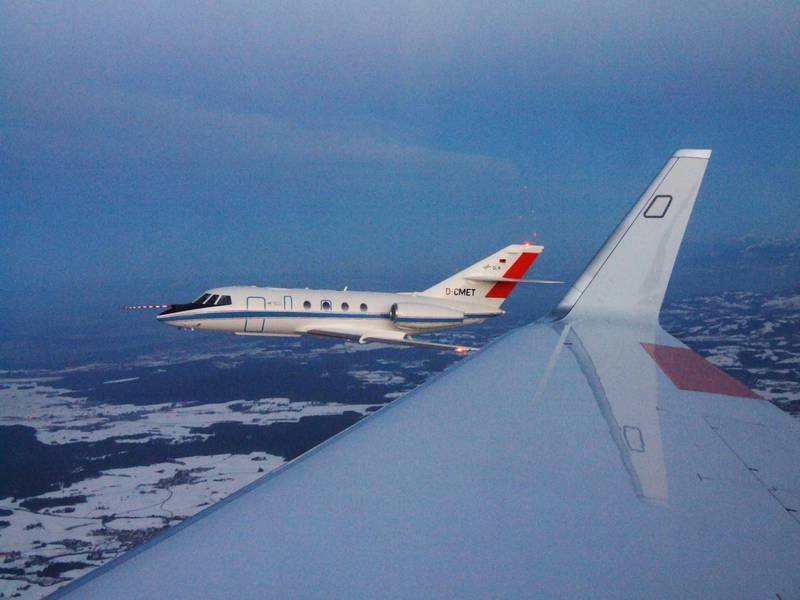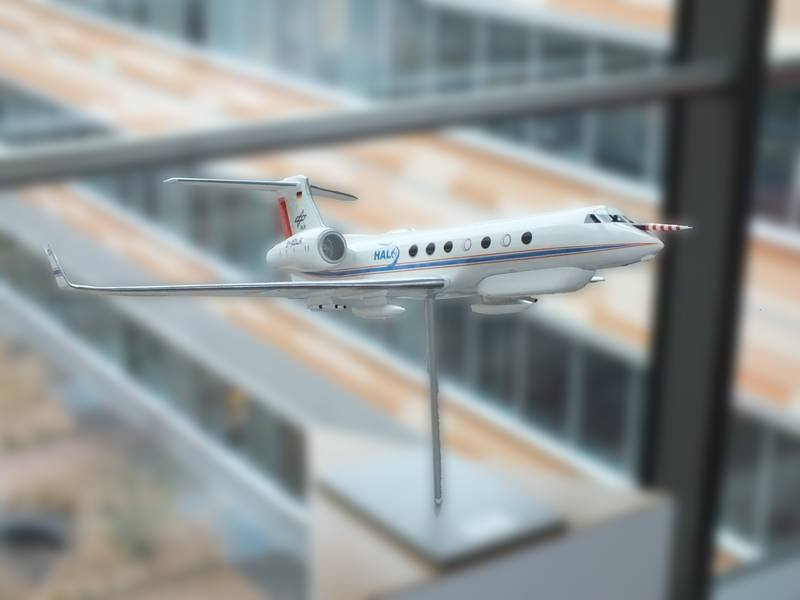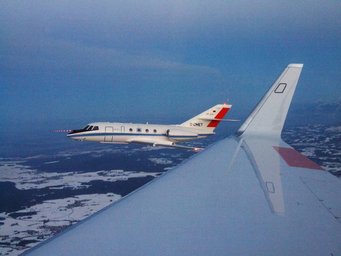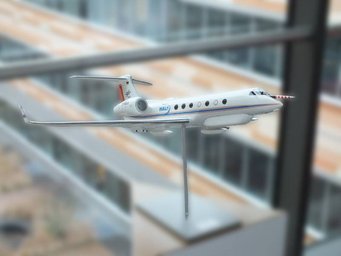Measurements at Extreme Heights
Station 13

Not only do physical-chemical processes in the atmosphere dictate weather patterns, they also have long-term climatic effects. Experimental data are therefore of key importance for gaining an in-depth understanding of the processes that play out in the atmosphere, thereby allowing climate models to be improved. Research aircraft for climatic and atmospheric research are important tools, because they bridge the gap between ground-based observation stations and satellite surveillance.
Previously, only a few aircraft were available for experiments at high altitudes, and they had a limited range and lacked the necessary cargo capacity. In 2012, the HALO research aircraft became operational for high-altitude measurement flights. HALO stands for ‘High-Altitude and Long-Range Research Aircraft’.
Key focuses of research includes:
• Aerosols, clouds and the hydrological cycle
• The self-cleaning capacity of the atmosphere
• The chemistry of the tropopause and its dynamics
• Climate change and extreme weather events
HALO began the OMO measurement programme under the guidance of the MPI for Chemistry in the summer of 2015. The aimed to investigate the free troposphere, a climatically important region of the atmosphere that reacts with great sensitivity to changes in chemical composition.
A Measuring Aircraft for German Research
Exhibit 13: Model of HALO

In 2001, the Max Planck Society and the German Aerospace Center, representing more than 30 research institutes in Germany, submitted an application to the Federal Ministry of Education and Research (BMBF) for a modern research aircraft. The goal was an aircraft with a large payload to transport numerous scientific instruments and a long range. At the same time, it was supposed to be able to fly in the transition region between the troposphere and the stratosphere at an altitude of 15 kilometers.
In the fall of 2004, funding was secured from the German Federal Ministry of Education and Research (BMBF), the Helmholtz Association, the Max Planck Society, the Jülich Research Center, the Karlsruhe Institute of Technology, the German Aerospace Center, and the Free State of Bavaria. After eight years of construction and certification, the High Altitude and Long Range Research Aircraft (HALO) was delivered to the scientific community this year.
HALO is an advanced version of the Gulfstream G550 business jet. Its exceptionally long range allows it to stay aloft for up to ten hours. This makes all regions of the Earth’s atmosphere accessible for research – from the poles to the tropics and remote oceanic areas.
Technical data HALO Gulfstream G550:
| Length | 31 m (including 1.6 m nose mast) |
| Height | 7.9 m |
| Wingspan | 28.5 m |
| Length of cabin | 11 m |
| Width of cabin | 2.24 m |
| Height of cabin | 1.88 m |
| Seats | 19 (usually three crew members and five to eight scientists and engineers, depending on instrumentation) |
| Weight empty | 22.23 tons |
| Weight total | max. 41.28 tons |
| Power units | 2 Rolls-Royce BR 710 engines |
| Thrust | 2 x 68.4 Kilonewton |
| Range | Over 8,000 km, depending on mission profile and payload. |
| Altitude | max. 15.5 Km (51,000 Feet) |
| Airspeed | max. 340 KCAS/Ma 0.885; 1054 km/h |

